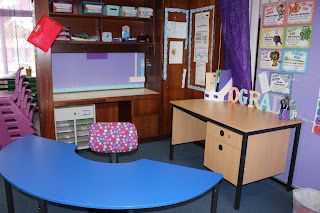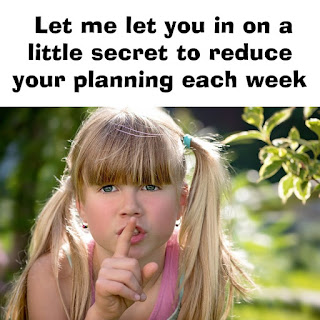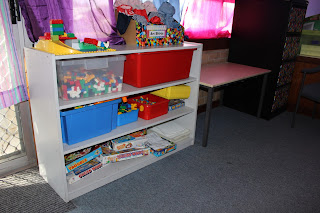Today I'll show you how to do the same!
Control Your Mindset
The first one is your mindset!
As a teacher we can NEVER get EVERYTHING done! We can get a lot done and we can do an amazing job with whatever time we have, but we CANNOT do everything!
Our own lives and our families do not and should not have to suffer for our job.
In any job there is always MORE we COULD do. Once we accept this fact we'll be more content with what we do get done. We need to focus on the things that make the biggest differences and impacts.
Prioritise
We need to focus on what will make the biggest differences and impacts on our students and prioritise those.
We also need to decide the priority of different aspects of our lives.
If I feel like I am behind I will work during my lunch hour (I say hour but its more like 35-40 minutes). I would rather lose time slowly eating my lunch or talking to my colleagues than lose time at home. Read more on prioritising here.
Maximise your Prep Time
I maximise my DOTT time (prep time). You can read all my tips on this in the blog post on Maximising Your Planning Time I did a while back, but in summary- plan out your planning time, don't get distracted by anything and have a schedule for each of your DOTT days. On Mondays I prepare reading groups and other weekly routine items that need changing out. On Tuesday I mark and file. On Wednesdays I plan for the following week and on Thursday I prep worksheets and resources and do photocopying. Knowing exactly what I am going to do and lumping things together saves SOOOO much time!
Get organised!
Set your classroom out in a way that works efficiently so that everything becomes easier.
For me that's a set of draws with all my items for the week, a place to put marking/items to be glued and items still in process, a clip board with assessments I am in the process of doing and a file with templates, a file with assessments and a file with all my planners and related resources ready to go.
Plan well!
You can read my blog article here on my Planning Documents.
Plan out your term at the start and you won't have to spend time later wondering what to teach or constantly referring back to the curriculum.
You can still have room to alter things if the students take you in a different direction or have different needs but a good plan in place will help you know where you are heading.
Identify your weaknesses and strengths
Find ways to use them to your advantage or work around them. If your weakness is coffee and you end up getting caught up in the staff room gossiping too much then consider having a kettle in your room.
If planning isn't your strong suit consider making your life easier and purchasing pre-planned units and work. If resource creating is too complicated or time consuming, search for the resource you need online.
I have planners for Years 1-6 for writing text types, Health, HASS and more. Check out my stores:
Teachers Pay Teachers
Designed By Teachers
If you have a strength in working with others consider team planning. You break up the lessons/subjects/units between your colleagues and then swap.
Cut Down your Marking
You don't need to mark every single error on every single piece of work! Seriously, you don't!
If it isn't a specific writing task let spelling errors and missing punctuation go....the likelihood of students looking at them again is slim. The chance of parents looking at them is even slimmer.
Marking keys can make marking quicker, using stamps or a basic tick can also increase flow. I find it better to give students immediate verbal feedback on most things so I use my verbal feedback stamp. Some worksheets are pretty cut and dry so I just glance and stamp.
Get students to mark their own work at the end of the lesson if possible.
Not everything has to be assessed every day of every week- get a rotation going of what you are assessing to keep your workload down.
Optimise Small Chunks of Time
Set aside the last hour or half hour of the week for finishing off time for the students and YOU.
Use this time to finish things off like assessments while the students work on what they need to finish.
Make use of student down time to get things done. I have students tell news all on one day. That gives me a solid half an hour to do student writing conferences and mark their diaries. During silent reading I do one-on-one assessments such as running records.
Before school, do any last minute prep for the day.
Before leaving school ensure your classroom is clean. I do the bulk of the cleaning while my kids are packing and stacking. Learn to direct your students as you yourself are packing up. Organise your desk, put things back where they belong. An organised classroom means everything is easier to find and you don't waste time searching. If I have any extra time in the 10 minutes before I leave school then I do some quick tick marking from the day or get ahead on filing.
Start Jobs Early
When things are due such as reports, start on them early! Leaving them till the last minute will make you feel rushed and unprepared. Read more on Making Report Writing Easier here.
Don't Reinvent the Wheel
If you are in your first few years of teaching you will naturally have to spend more time as you build up a repertoire of resources and plans. Stick in there, each year will get less and less time consuming! Make sure anything you make or plan is going to be useful and obtainable the following year.
Make files on your computer for each subject and mini files within those. This also works for lever arch files and page protectors. Sometimes I go back looking for things from my weekly planners from my first year of teaching or resources I created then. I am often disappointed when I can't find something or my plans weren't detailed enough that I can't actually remember what I did.
So now you need to put all of this into action. Choose what you want to priorise, choose the times you would like to start and leave work and work out what actions you can put in place to get you there.
Try not staying back late for a week and see that the world doesn't tumble down!
Good luck!

⇨ Like us on Facebook ⇨ Follow us on Pinterest










































































